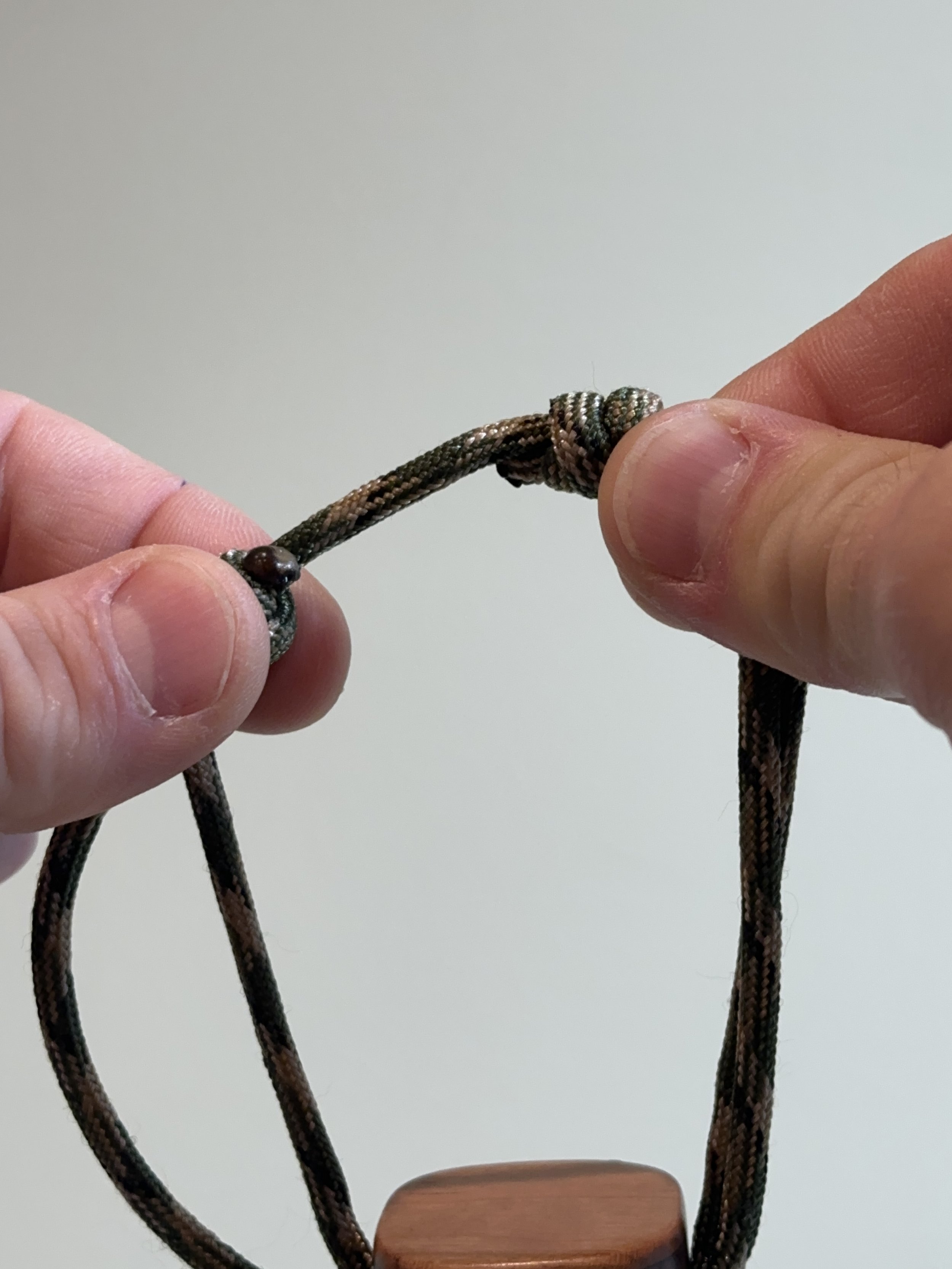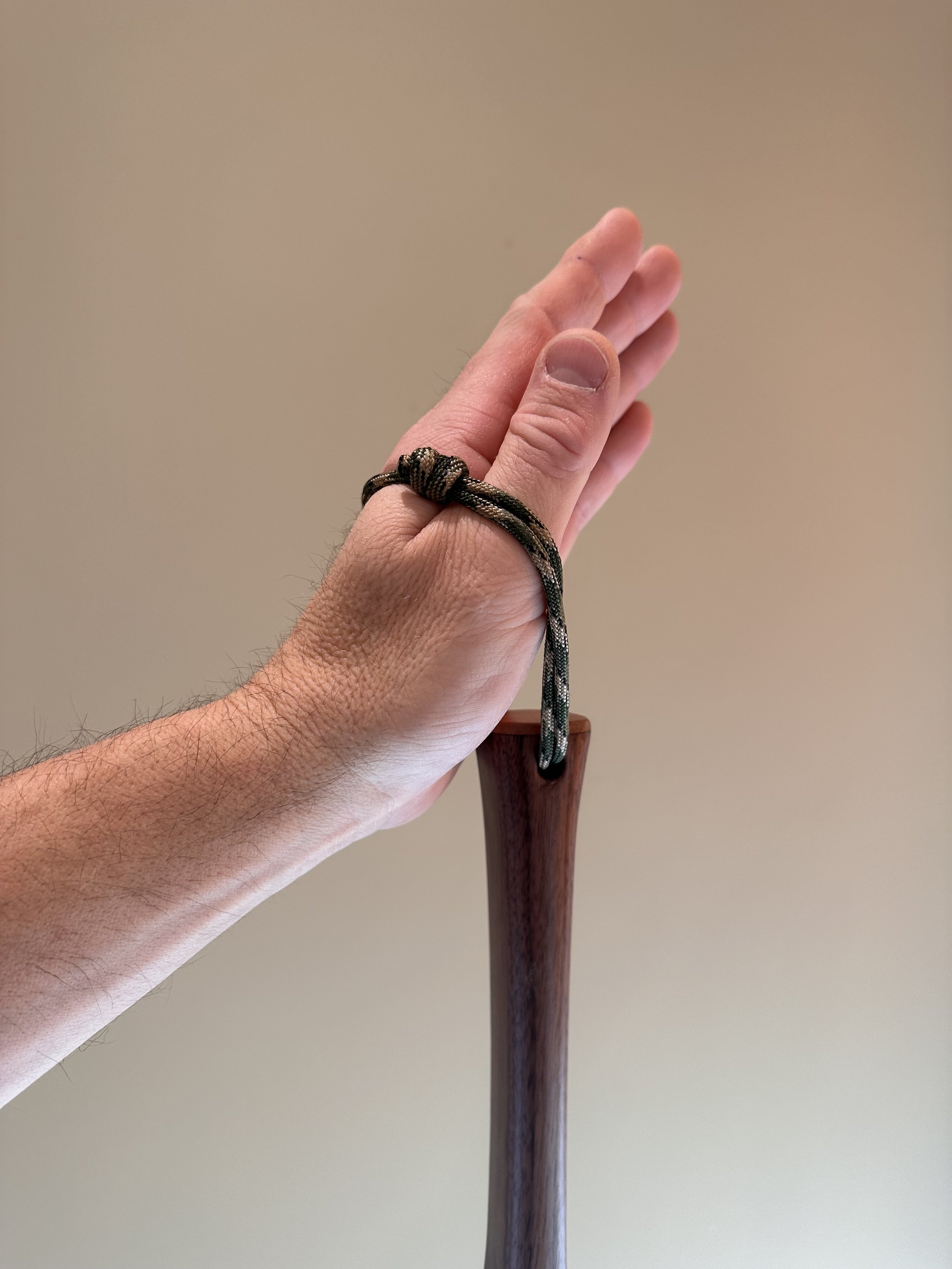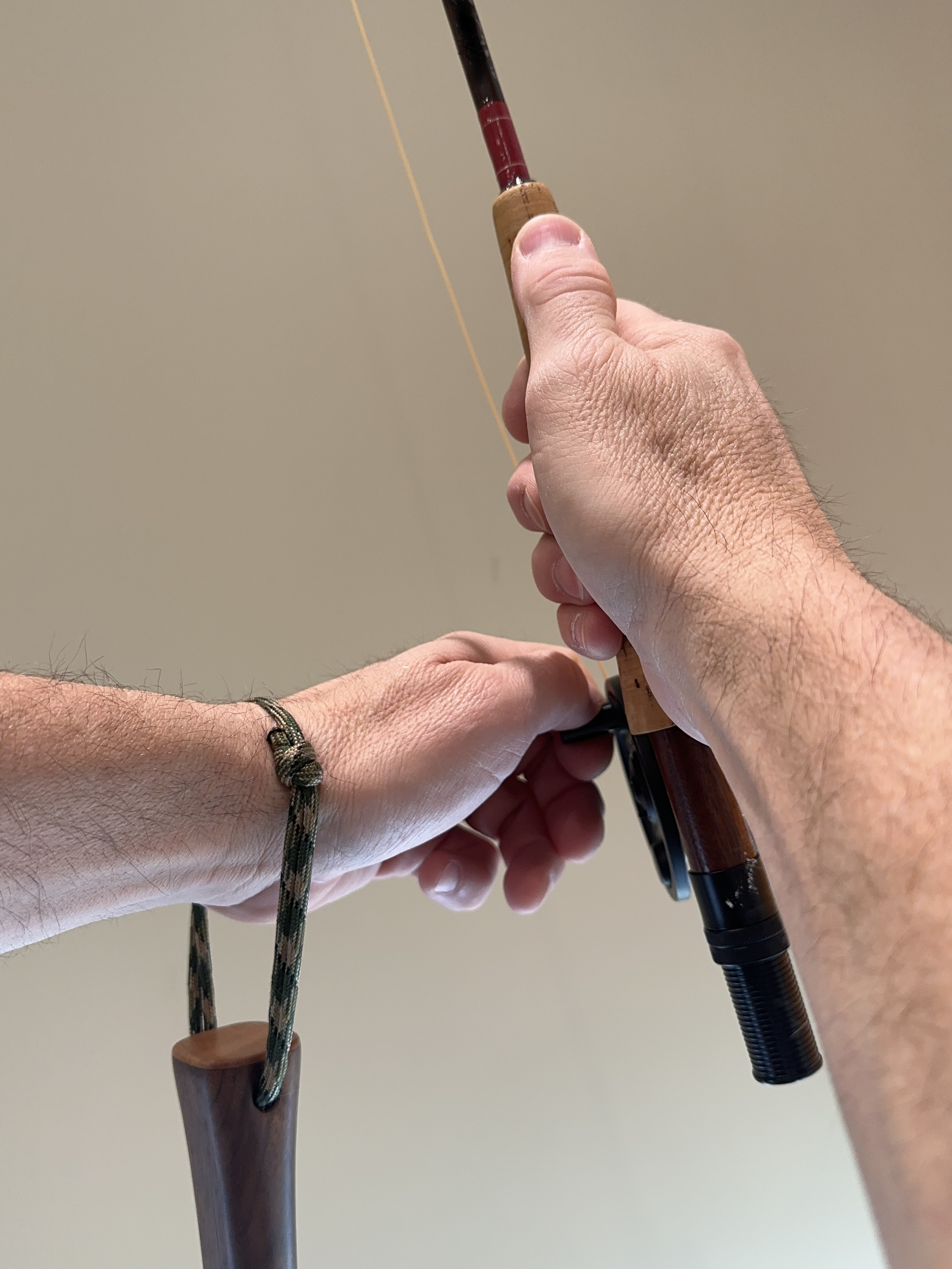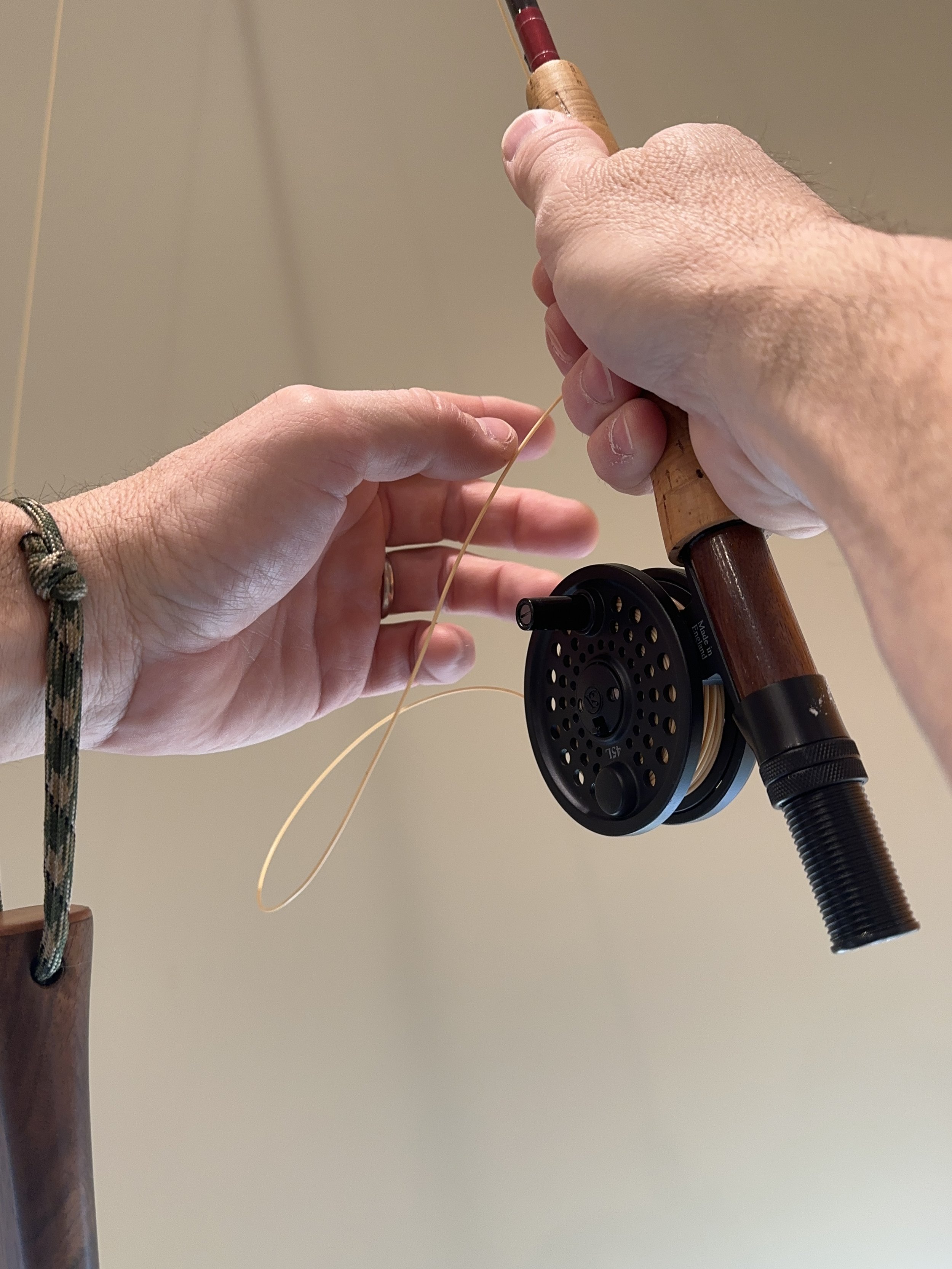Slip Knot Lanyard.
Our nets come standard with a slip knot lanyard. This lanyard solves the awkward problem of having the rod in one hand, the net in another and the need for a free hand. You can use this lanyard with the normal means of attaching your net, such as, a magnetic leash, holster, pack or belt.
The Net Handle Loop
The slip knot lanyard consists of a paracord loop with two slip knots. The loop is attached to the handle.
Adjustment
First, use your index finger and thumb to grasp the two parallel cords at the base of one of the knots. With opposite hand, used your index finger and thumb to slide the knot away from the other knot. To equalize the slack, repeat with the other knot, but this time use your index finger and thumb to grasp the single cord while your other hand slides the knot.
Check The Fit
The enlarged loop needs to slide over your non-rod hand, onto your wrist. Ideally, you should need to wiggle/shake your hand slightly to get the lanyard to slide down to your wrist. You should not need your opposite hand to assist. To test the fit, let your arm hang freely to your side in a relaxed position. The lanyard should not slide off your hand, even if you give it a slight shake. Adjust as needed until the fit is as prescribed. Once properly fitted, remove the lanyard from your hand/wrist and secure the net as you would normally do while fishng. This can be done by using a magnetic leash, holster, pack, belt, etc.
How To Use
When you hook a fish, we recommend you slip the lanyard over your hand/wrist as soon as possible. Bring the net to the front of your body and with the non-rod hand, slide the lanyard over your hand and onto your wrist. This can be done with one hand. Once on your wrist, your non-rod hand is free to do any task, like reeling, stripping line, palming your reel, etc, which allows you to focus on fighting the fish, knowing your net is ready. Once you reel in your catch grab the handle with the non-rod hand and land the fish. But if the fish makes a run, you have the benefit of just dropping the net, which will just hang from your wrist, up away from your feet. This also avoids the need to stuff the net under your armpit or between your legs to free up your non-rod hand. Once you reel the fish back in, grab the handle and land that fish. Once done, slide the lanyard off of your hand/wrist and secure the net by the method you normally employ.










